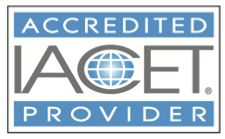
If you want to make a lasting difference at your organization, effective change management is key. By convincing others to change, you can overcome obstacles that may be dragging the organization down.
A change management course can help you gain the knowledge necessary to become a catalyst for change. With change management training, you’ll study the strengths and weaknesses of multiple change strategies—so you can find a method that works best for your unique situation.
Wharton Online’s Removing Barriers to Change in Organizations course was developed by Professor Jonah Berger, a world-renowned expert on change, influence, and word of mouth. Within the course, we provide information on Berger’s REDUCE framework for change management. Keep reading to learn more about the REDUCE framework and how it can help you address common barriers that exist within organizations.
What Is a Change Management Framework?
An organizational change management framework is a process or structure that you can follow when implementing change within an organization. Without a framework, it can be difficult to get your new ideas to stick. McKinsey estimates that roughly 70% of organizational change programs end up failing to meet their objectives. If you go in with a firm plan in place, you are much more likely to succeed.
Change management frameworks are intended to help professionals communicate the importance of change to their colleagues. In addition, these frameworks can be used to identify and respond to potential roadblocks that might be inhibiting change.
There are several organizational change management frameworks that have been developed over the years. Each framework tends to provide steps that individuals can follow to help initiate change. Wharton Online’s Removing Barriers to Change in Organizations course primarily focuses on a change management framework known as REDUCE.
Related: How Persuasion Skills Can Benefit Your Career
What Is the REDUCE Framework?
The REDUCE framework is a change management framework developed by Wharton Professor Jonah Berger. Berger is an internationally bestselling author who frequently publishes articles in academic journals. Accounts of his work have appeared in The New York Times and Harvard Business Review.
REDUCE stands for Reactance, Endowment, Distance, Uncertainty, and Corroborating Evidence. Below, we explain how each step of the REDUCE framework can be used to identify roadblocks and support positive change.
Reactance
The core concept behind the Reactance step is that when pushed, people’s natural reaction is to push back. In order to combat this, you need to find ways to encourage others to persuade themselves. If you simply tell others what they should be doing differently, they are likely to resist. But if they can participate in the process and make their own choices, they are more likely to go along with your idea.
Related: 5 Ways to Empower Your Team to Make Decisions
Endowment
People are attached to their ways of doing things. Taking no action at all can be a tempting option when people are faced with an opportunity to change. However, sticking with the status quo can often be costly. In the Endowment stage, your goal is to get others to understand the negative consequences of inaction. It can also be helpful to show the similarities between your new, suggested process and the existing process, so that change seems less daunting.
Distance
Sometimes it’s hard for individuals to conceptualize what a new idea might mean for their day-to-day work. In other words, the information you’re presenting to them is too distant—they can’t understand the tangible effects that change will have. Another reason why information may seem distant is if the change you’re suggesting is too big an ask. One way to lower this barrier is to suggest that your organization takes incremental steps to enact change, instead of embracing a new policy all at once.
Uncertainty
Change often involves uncertainty. After all, it’s hard to know exactly how a new process will shake out before it is implemented. To overcome this feeling of uncertainty, it’s important to make it easier to try new things. If individuals have the chance to try out a new way of doing something and are given an opportunity to provide feedback, they are less likely to resist your call to change.
Corroborating Evidence
People will be more motivated to embrace your new idea if they see a wealth of evidence that supports the reasoning behind it. Oftentimes, having one person present the new idea is not enough to change people’s minds. Consider looping in others who have benefitted from your suggested change. As you present your new idea to your company, turn to these individuals for examples and case studies that support why the idea works.
Become a Catalyst for Change
Whether you’re transitioning your team to a new project management tool, suggesting a new strategy for a client, or announcing a change in leadership structure, following a change management framework can help get your colleagues on board with your new idea.
Keep in mind that not every situation will require you to address all five roadblocks of the REDUCE framework. However, by learning about all of them, you can better identify which roadblocks are in play at your organization and take steps to mitigate them. In Wharton Online’s Removing Barriers to Change in Organizations online course, we go into more detail about how to apply the REDUCE framework to your workplace.
Our four-week, 100% online course was developed by Professor Jonah Berger—the creator of the REDUCE framework. The goal of the course is to help professionals overcome inertia and reframe the way they present change. If you’re ready to get started, request more information today.



